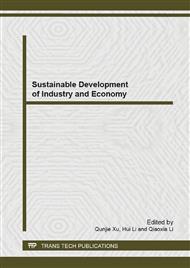p.276
p.281
p.288
p.293
p.298
p.305
p.310
p.315
p.322
Crew Planning Optimization Model of High-Speed Railway
Abstract:
Crew planning with complicated constraints is decomposed into two sequential phases: crew scheduling phase, crew rostering phase. Setting a dynamic model based on set covering model, Genetic Algorithm is adopted based on feasible solution range in search of optimal scheduling set with minimum time. Constructing a node-arc TSP network, it adopts Genetic Algorithm and Simulated Annealing Algorithm to create a work roster. Based on Wuhan-Guangzhou High-Speed Railway in China, the balance degree of crew planning is measured by crew working time entropy. The proposed model proves strong practical application.
Info:
Periodical:
Pages:
298-304
Citation:
Online since:
December 2013
Authors:
Price:
Сopyright:
© 2014 Trans Tech Publications Ltd. All Rights Reserved
Share:
Citation:


